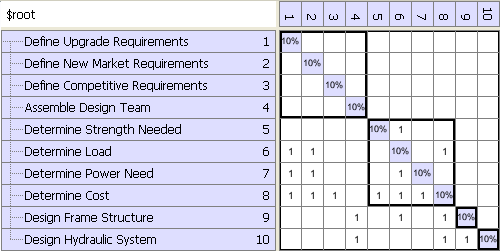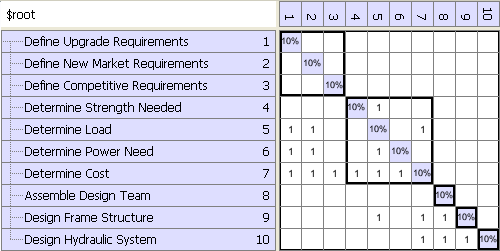Partitioning Algorithms for Activity/Process DSMs#
Lattix provides a number of algorithms, all of which can be useful for process and activity DSMs. All of the partitioning algorithms have been described in the User Manual under Applying Algorithms. Two of these partitioning algorithms were created specifically for activities and processes:
As Early As Possible (AEAP)#
In the As Early As Possible algorithm, the activities are sequenced in a way so as to start them as early as possible. This means that an activity will be started as soon as activities that it depends on are complete.

In this example, notice that Assemble Design Team is in the first block. Since it does not depend on anything it can be started right away. Note that the first block contains a number of activities, all of which don’t depend on any other activity. They can all be started, in parallel.
As Late As Possible (ALAP)#
In the As Late As Possible algorithm, the activities are sequenced in a way so as to start them as late as possible. This means that an activity will only be started if it all other activities that don’t depend on it directly or indirectly are complete.

In this example, notice that Assemble Design Team was delayed until all other activities that did not depend on it directly or indirectly were completed. Once again, activities that have no dependencies on each other but have still been grouped together represent activities that can be executed in parallel.
